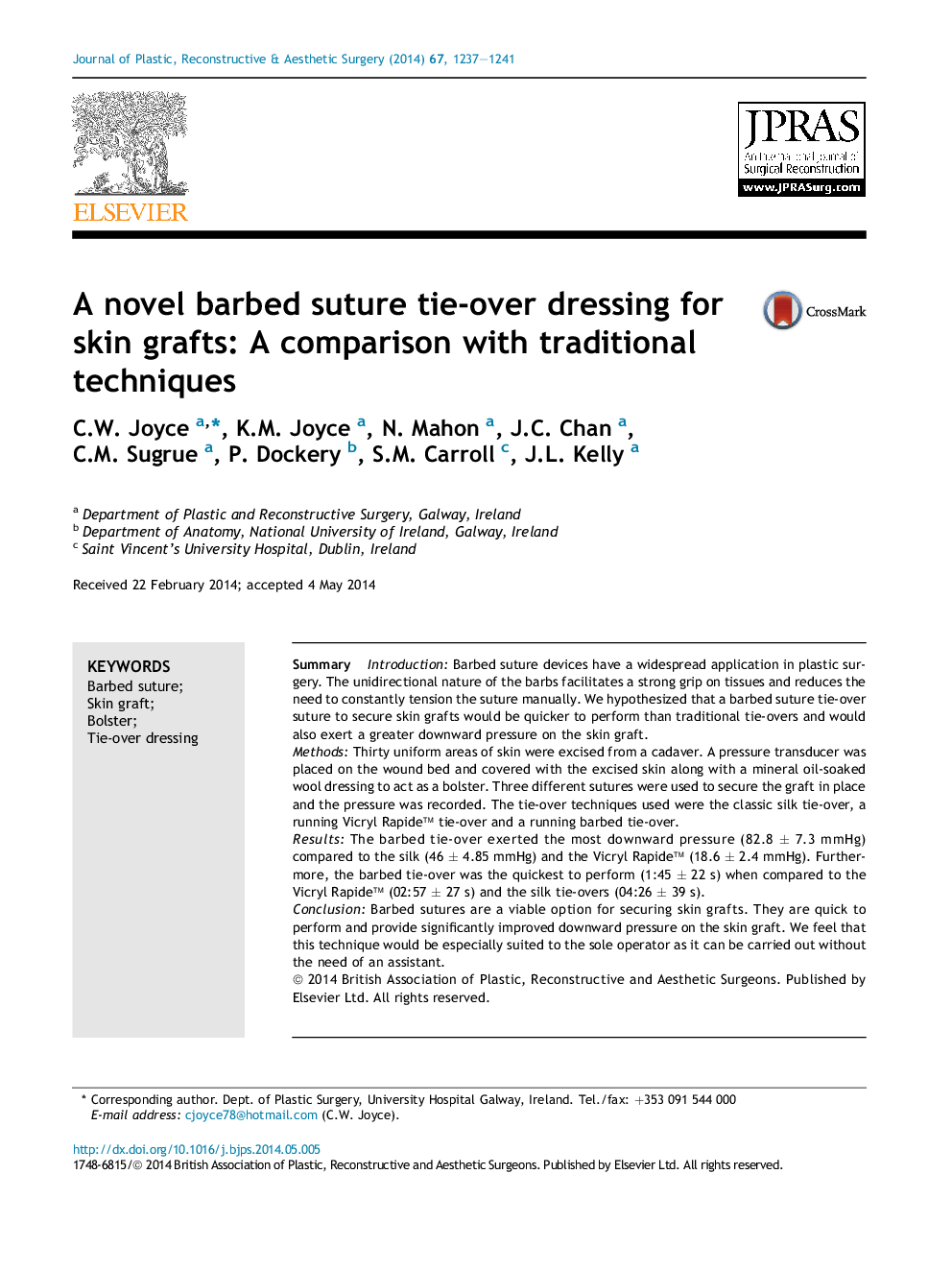| Article ID | Journal | Published Year | Pages | File Type |
|---|---|---|---|---|
| 4117607 | Journal of Plastic, Reconstructive & Aesthetic Surgery | 2014 | 5 Pages |
SummaryIntroductionBarbed suture devices have a widespread application in plastic surgery. The unidirectional nature of the barbs facilitates a strong grip on tissues and reduces the need to constantly tension the suture manually. We hypothesized that a barbed suture tie-over suture to secure skin grafts would be quicker to perform than traditional tie-overs and would also exert a greater downward pressure on the skin graft.MethodsThirty uniform areas of skin were excised from a cadaver. A pressure transducer was placed on the wound bed and covered with the excised skin along with a mineral oil-soaked wool dressing to act as a bolster. Three different sutures were used to secure the graft in place and the pressure was recorded. The tie-over techniques used were the classic silk tie-over, a running Vicryl Rapide™ tie-over and a running barbed tie-over.ResultsThe barbed tie-over exerted the most downward pressure (82.8 ± 7.3 mmHg) compared to the silk (46 ± 4.85 mmHg) and the Vicryl Rapide™ (18.6 ± 2.4 mmHg). Furthermore, the barbed tie-over was the quickest to perform (1:45 ± 22 s) when compared to the Vicryl Rapide™ (02:57 ± 27 s) and the silk tie-overs (04:26 ± 39 s).ConclusionBarbed sutures are a viable option for securing skin grafts. They are quick to perform and provide significantly improved downward pressure on the skin graft. We feel that this technique would be especially suited to the sole operator as it can be carried out without the need of an assistant.
